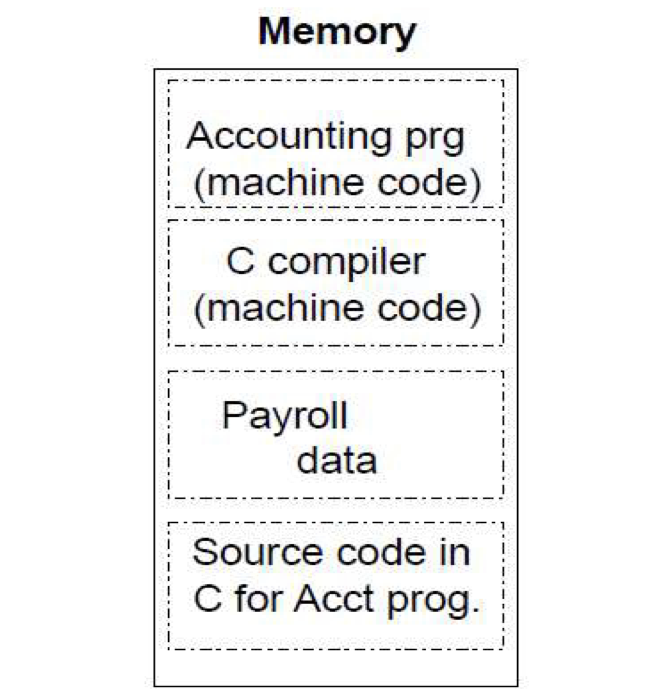Language of the Computer
Instructions in Memory(1)
- Instructions are the language of computer
- vocabulary
- sentences with a formal grammer
- Same ISA family supports same instructions
- supports backward compatibility (하위호환성 지원)
- Different computers have different instruction sets
- but with many aspects in common
- Early computers had very simple instruction sets
- simplified implementation
- Ever since, the ISA have tended to be complicated
- called CISC (Complex Instruction Set Computer)
- 고성능이지만 높은 파워 소모 -> 효율적 시스템 구성이 어려움
- Many modern computers have simple instruction sets
- called RISC (Reduced Instruction Set Computer)
- 하나의 명령어가 수행할 수 있는 일의 크기를 줄여 각기 비슷한 일을 수행
- 하나하나 성능은 떨어질 수 있으나 효율적 ISA 구축이 가능, 낮은 파워 소모
Instructions in Memory(2)
-
- Instructions are represented as numbers and, as such, are indistinguishable from data (데이터와 명령어는 구분이 안됨 - 숫자로 표현되기 때문)
-
- Programs are stored in alterable memory(that can be read or written to) just like data
-
Stored-program concept
- Programs can be shipped as files of binary numbers - binary compatibility
- Computers can inherit ready-made software provided they are compatible with an existing ISA

Subtract Example
- C code : f = (g + h) - (i + j);
- translates into the following assembly code
add t0, g, h
add t1, i, j
sub f, t0, t1 - Each version may produce a different result because floating-point operations are not necessarily associative(결합법칙) and commutative(교환법칙) ... more on this later
Operands
-
In C, each "variable" is a location in memory
-
In hardware, each memory access is expensive - if variable
ais accessed repeatedly, it helps to bring the variable into an on-chip scratchpad and operate on the scratchpad (registers) -
To simplify the instructions, we require that each instruction (add, sub) only operate on registers
-
Note : the number of operands (variables) in a C program is very large; the number of operands in assembly is fixed..
- there can be only so many scratchpad registers
- 레지스터 개수도 정해져 있음
Registers
- The MIPS ISA has 32 registers (x86 has 8 registers) - Why not more? Why not less? Cost..
- Each register is 32-bit wide (modern 64-bit architectures have 64-bit wide registers)
- A 32-bit entity (4bytes) is referred to as a word
- To make the code more readable, registers are partitioned as
$s0-$s7(C/Java variables),$t0-$t9(temporary variables)
